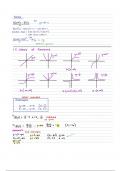University of Central Florida
Latest uploads at University of Central Florida. Looking for notes at University of Central Florida? We have lots of notes, study guides and study notes available for your school.
-
655
- 0
-
31
All courses for University of Central Florida
- NGR 6172 1
- NR 228 Exam 2 Study Guide 1
- NUR 2032C NUR2032C 9
- NUR 2063 NUR 2063 (NUR 2063) 1
- NUR 3025 NUR3025 1
- NUR 3028 NUR3028 22
- NUR 3028 ) NUR 3028 (NUR3028) 2
- NUR 3047C NUR3047C 2
- NUR 3065L NUR 3065L 1
- NUR 3125 NUR3125 13
- NUR 3225 1
- NUR 3805 NUR 3805 1
- NUR 4837 NUR 4837 1
- NUR3180 NUR3180 3
- NURS 200 1
- Nursing 100 1
- NURSING NGR 6172 NURSING NGR 6172 1
- NURSING NUR3180 NUR3180 2
- NURSING NUR3180 Med Surg NURSING NUR3180 4
Popular books University of Central Florida
Latest notes & summaries University of Central Florida
The study guide for the final exam provides a comprehensive review of significant historical periods and events, starting with the Byzantine Empire, its rulers like Justinian, and societal structures such as the Carolingian dynasty's inheritance practices. It examines the Viking expansion and Charlemagne's era, touching upon conflicts between emperors and the papacy. It covers the Crusades, detailing motivations, outcomes, and their limited territorial impact. Medieval society's structu...
Chapter 1 introduces key economic terms and concepts, emphasizing how society manages scarce resources and makes decisions to maximize benefits. Economics is defined as the study of resource management under scarcity, where rational behavior leads individuals to make choices optimizing their utility. Costs are classified into explicit (monetary expenses) and implicit (non-monetary, such as opportunity costs), with opportunity cost representing the trade-off of forgone alternatives. Marginal deci...
Chapter 2 focuses on "Thinking Economically" and introduces economic models as simplified representations of the economy using variables and relationships to explain processes. A key model discussed is the circular flow diagram, which illustrates the exchange of goods, services, and money between households and firms, highlighting their interdependence. Households provide factors of production (labor, land, capital, and entrepreneurship) to firms and receive wages, rent, and profits, while...
Chapter 13 of the macroeconomics text discusses the financial system, which connects savers with borrowers to facilitate investment and economic growth. Savers, who spend less than they earn, accumulate wealth through savings accounts, bonds, or stocks, while borrowers use funds for purposes like starting businesses or making large purchases. Financial markets, including the bond and stock markets, allow for debt financing (bonds) and equity financing (stocks), each offering distinct risks and r...
Chapter 15 of the macroeconomics text focuses on unemployment, its measurement, causes, and effects. The Bureau of Labor Statistics (BLS) categorizes the adult population (16+) into the employed, unemployed, and those not in the labor force. The labor force includes people working or actively seeking work, with unemployment defined as those without jobs but available and seeking work. Unemployment is classified into frictional (job searching), seasonal (industry-specific timing), cyclical (econo...
Chapter 16 explores the monetary system, defining money as an asset that facilitates trade, measures value, and stores wealth. It functions as a medium of exchange, unit of account, and store of value, with types including commodity money (e.g., gold), fiat money (e.g., U.S. dollar), and cryptocurrency. The U.S. money stock includes currency and demand deposits, categorized into M1 (highly liquid assets) and M2 (broader forms including savings). The Federal Reserve, as the central bank, regulate...
Class notes on Properties of Linear Functions and Models, Transformations, Library of Functions, and Piecewise Function
Practice problems from the first three chapters of PreCalculus (1-3)
Logarithmic Rules and some Practice from (4.2-4.4)
Practice problems dealing with Library of Functions, Piecewise-defined Functions & Transformations











